Clarity PHEV: One Of Three Electrified Options
The 2019 Honda Clarity plug-in electric hybrid vehicle (PHEV) is one of three Clarity versions, joining the Clarity Electric and Clarity Hydrogen Fuel Cell. Honda is on to something, offering multiple versions of the Clarity sedan to give consumers options for the electrified vehicle that fits their driving lifestyle. And for those who want a crossover, the all-new Honda CRV-Hybrid will be in dealers in early 2020. Choices are a good thing when it comes to electrified cars.

Gasoline or Electric: Whatever It Takes
The 2019 Clarity PHEV powertrain is a serial hybrid system, where the gasoline engine turns an electric generator that then drives the wheels. The 1.5-liter four-cylinder gasoline engine delivers 103 horsepower (hp) and 99 pounds-feet (lb.-ft) of torque; along with an electric propulsion motor with peak output of 181 hp and 232 lb.-ft. of torque, it produces a total system 212 hp. All of this goes through a fixed, single-speed transmission driving the front wheels. All-wheel drive is not an option.

The EPA rates the driving range in all-electric mode at 48 miles; 42 miles per gallon (mpg) in hybrid mode; and 110 MPGe in electric mode. MPGe is a measurement of how far a car can travel electrically on the same amount of energy as is contained in 1 gallon of gasoline. So how far can you actually go in the Clarity PHEV? It comes down to your driving habits, and how much you charge the battery, either while driving or when plugged-in at home or at a charging station.
In 310 miles of conservative, 55-percent highway/45-percent city driving, we averaged 48.2 mpg in hybrid mode. The overall average, though, was 94.3 mpg. The higher number reflects recharging the battery as often as possible, using the regenerative brakes and the regeneration paddles located on the steering wheel. The paddle, behind the left side of the steering wheel, has four “clicks” of braking force with the fourth setting being strong enough that the Clarity PHEV almost came to a full stop. The right paddle is for releasing the brake force. When mastered, you can drive in many situations without using the brake or accelerator pedals. Fuel economy numbers reported by Clean Fleet Report are non-scientific and represent the reviewer’s driving experience. Your numbers may differ.

When driving, the 17-kilowatt-hour lithium-Ion (li-ion) battery is replenished through the gasoline engine and the regenerative charging system. Regenerative technology converts kinetic energy into electric energy and stores it in the battery when applying the brakes or coasting. This process can be viewed on a dash gauge where you can watch the power flow into and out of the battery and electric motor. The Clarity PHEV’s regenerative braking required little pedal modulation and had a confident feel; it is part of the braking system of all-wheel anti-lock brakes with electronic brake-force distribution, brake assist, and vehicle stability assist with traction control. The Clarity PHEV had solid, straight and true stops.
When parked, to get a full charge from empty, the 6.6-kilowatt onboard charger takes about 12 hours with a 120V (Level 1) common house outlet, or about two-and-a-half hours using a 240V (Level 2) charger. The Clarity PHEV is not equipped with a DC Fast Charge (Level 3) charge port.
Out on the Road

The Clarity PHEV, in Sport mode and with a fully charged battery, went zero-to-60 in just under eight seconds. It felt pretty peppy moving a hefty 4,095 pounds. But when the battery is drained and the engine is in full recharge mode, you can hear the generator, which is noticeably loud, and the performance suffers. The Clarity PHEV has good manners on the highway and felt sturdy and planted to the road. Even Southern California’s grooved concrete freeways, which can cause cars to track with the grooves or feel every seam and patch, were not a problem.
In town, the motor-driven power steering is light for easy maneuvering. The bottom line is the Clarity PHEV has a cushy ride, is built for freeway cruising and in-town driving and is not considered sporty. So, sit back and enjoy the smooth ride.
Interior Built for Comfort
Clean Fleet Report’s 2019 Clarity PHEV Touring’s all-black interior was nicely appointed. The dash and doors, outfitted with soft and hard plastic surfaces, were accented by a very tasteful use of brushed aluminum trim pieces. Honda touts the environmental responsibility of the interior, using plant-derived and recycled materials. A very handy feature is, when using the right turn signal, cameras show blind spots on the color display screen.

The gauges and controls were conveniently located, with a digital dash having several settings displaying a wide assortment of data. The floating center console, with rear vents, offers extra storage space. The console houses the gear selector switches, and divides the perforated and heated, leather-appointed seats that were eight-way power adjustable with memory for the driver and four-way power adjustable for the passenger. Sadly, no lumbar adjustments were to be found.
The rear seats are made for grown humans: two comfortably, but three for short jaunts. Divided by the fold-down armrest (with cup holders), leg, shoulder and head room were all on par for a midsize sedan.For storage, the rear seat folds 60/40 to provide excellent cargo space when two are off on a long weekend road trip. With the rear seat back in its upright position, trunk space is maximized as the batteries are located under the seats.

Clean Fleet Report’s Clarity PHEV Touring had no options, so standard equipment included an 8.0-inch color touchscreen with navigation for the infotainment (information and entertainment) system. Our car had the 180-watt eight-speaker audio system with HD FM/AM, SiriusXM, Siri Eyes Free, Apple CarPlay, Android Auto and Pandora. All of which can be managed by the leather-wrapped, steering-wheel mounted controls. Sadly, there were no volume or channel knobs. Other features of the system include an auto-dimming Homelink mirror, iPod/USB ports, AUX and audio input jacks and Bluetooth for voice controls and hands-free telephone calling.
Convenience features include dual automatic climate control, tilt and telescopic steering column, power windows and door locks, power and heated foldaway exterior mirrors with turn signals and floor mats. Other standard features are walk-away door locks, electronic parking brake with brake hold, push button start, security alarm, a tire pressure monitoring system and a tire puncture repair kit that replaces a spare tire.
Unique Design

The front of the Clarity PHEV has a similar look to an Accord, with a differentiator that the Clarity LED headlights are slits that sweep into the fenders, and the LED side-marker lights have a distinctive L-shape. The 18-inch alloy wheels were built to cut through the wind with the Michelin 235/45 Energy Saver all-season tires making for a good look.
But from the B pillar back, things get odd. The partial side skirts on the rear wheel openings are an unconventional design, to say the least. Then there are body creases, cut lines and scoops that create a moment of “What is going on?” It just looks clunky. Maybe the Clarity was designed for a market other than America where this is all just fine. Since Honda is comfortable with alternative fuel propulsion in sedans, look for the next generation Clarity to be more contemporary.
Safety Features

Standard safety features include front, side and curtain airbags, lane keeping assist and lane watch, rear view camera, collision mitigation braking, road departure mitigation, adaptive cruise control, and hill start assist.
The 2019 Clarity PHEV has not been rated by the National Highway Traffic Safety Administration or the Insurance Institute for Highway Safety.
Pricing and Warranties
Clean Fleet Report’s Clarity PHEV Touring had a MSRP of $36,600, which does not include the $930 destination and handling fee. Federal and state rebates may apply.
The Clarity PHEV comes with these warranties.
- High Voltage Battery – Eight years/100,000 miles (10 years/150,000 miles in CA)
- New Vehicle – Three years/36,000 miles
- Powertrain – Five years/60,000 miles
- Rust Through – Five years/Unlimited Miles
- Roadside Assistance – Three years/36,000 miles
Observations: 2019 Honda Clarity PHEV Touring
The Honda Clarity family of sedans gives you the option an EV that uses no gasoline, one that uses a combination of gasoline and electricity, and one that makes its own electricity using hydrogen. And with the Chevrolet Volt discontinued, the Clarity PHEV, with its 48 miles of all-electric driving range, is now the leader among its peers of affordable plug-in hybrids. There are the small, but premium BMW i3 REX that has significantly more range and the luxury Karma Revero PHEV with a 61-mile range, but those are different animals. The Clarity has created a following, finishing the year—2019—as seventh best-selling plug-in car in the U.S., trailing only three Tesla models, the Toyota Prius Prime, Chevrolet Bolt EV and Nissan Leaf.

The 2019 Honda Clarity was designed as an electric vehicle, and the packaging of interior space for people and gear shows, rivaling compact crossovers. The interior, which seats up to five adults, is made with eco-friendly materials.
The beauty of a plug-in electric vehicle is how it fits in that sweet spot between gasoline-powered and all-electric cars. Some see a PHEV as a bridge between these two propulsion systems, waiting for the day in the not-so-far-off future where battery electric vehicles will get in the 400+ mile driving range and recharge in single digit minutes. Until then, give the Clarity PHEV a close look, and see if it has what it takes to get you electrified.
Make sure to opt-in to the Clean Fleet Report newsletter (top right of page) to be notified of all new stories and vehicle reviews.
Whatever you end up buying, Happy Driving!
Related Stories You Might Enjoy—Other EV/PHEV Sedans
Road Test: 2018 Toyota Prius Prime PHEV
Road Test: 2019 Chevrolet Bolt EV
Road Test: 2019 Nissan Leaf EV
Road Test: 2019 Ford Fusion Energi PHEV
Road Test: 2018 Hyundai Ioniq PHEV
Road Test: 2019 Hyundai Ioniq EV
News: 2018 Hyundai Sonata PHEV Drops Price, Adds Range
Road Test: 2018 Kia Optima PHEV
Flash Drive: 2017 Honda Clarity EV
Flash Drive: 2017 Honda Clarify Fuel Cell EV
Disclosure:
Clean Fleet Report is loaned free test vehicles from automakers to evaluate, typically for a week at a time. Our road tests are based on this one-week drive of a new vehicle. Because of this we don’t address issues such as long-term reliability or total cost of ownership. In addition, we are often invited to manufacturer events highlighting new vehicles or technology. As part of these events we may be offered free transportation, lodging or meals. We do our best to present our unvarnished evaluations of vehicles and news irrespective of these inducements.
Our focus is on vehicles that offer the best fuel economy in their class, which leads us to emphasize electric cars, plug-in hybrids, hybrids and diesels. We also feature those efficient gas-powered vehicles that are among the top mpg vehicles in their class. In addition, we aim to offer reviews and news on advanced technology and the alternative fuel vehicle market. We welcome any feedback from vehicle owners and are dedicated to providing a forum for alternative viewpoints. Please let us know your views at publisher@cleanfleetreport.com.

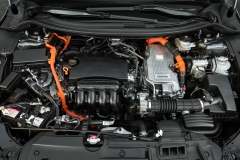
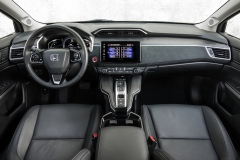

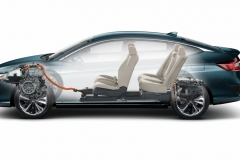
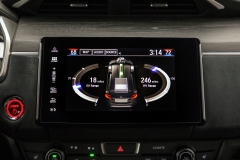
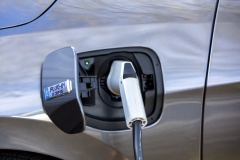
4 thoughts on “Road Test: 2019 Honda Clarity Plug-In Hybrid Touring”